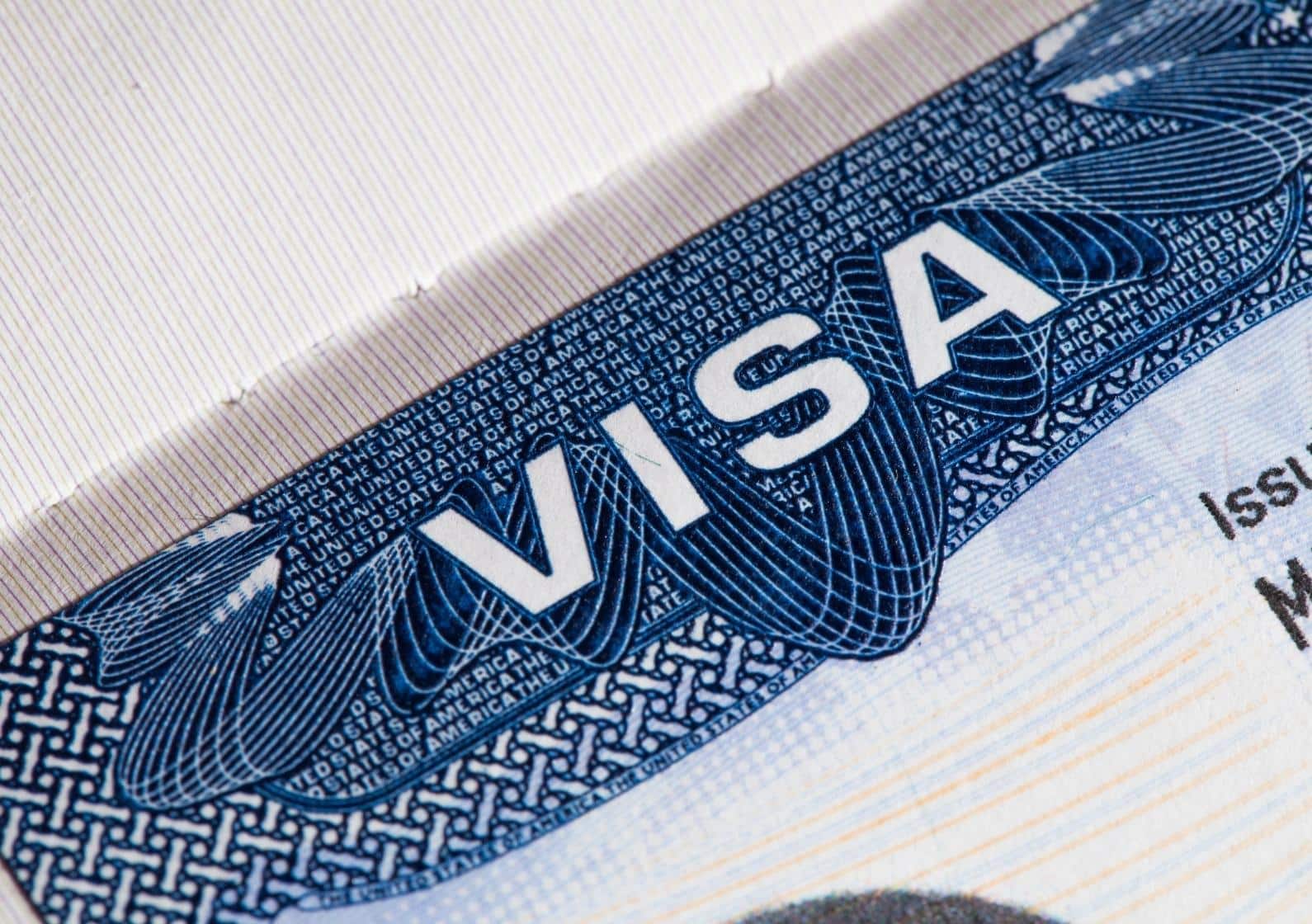If you have a qualifying family member with permanent residence or U.S. citizenship, and you are wondering about immigration adjustment of status, you may be able to adjust from work-based immigration to family-based immigration. Knowing the processes involved and how they work may help you change your status without issue, and possibly avoid the employment-based green card backlog.
What Is Family-Based Immigration?
Family immigration involves lawful permanent residents (LPRs) or U.S. citizens sponsoring immigrant family members to help them gain LPR status or citizenship. If you came to the U.S. on a work visa, it may be possible to adjust your status if you have a family member with authorization to help you make the adjustment.
Today, family-based immigration is behind the majority of green cards in the U.S. In 2020 alone, 45% of new immigrants were immediate relatives of American citizens, with 17% comprising immigrants whom another family member sponsored.
Who Is Eligible for a Family Visa?
If you want to adjust your E-1 visa or other employment-based status and qualify for family-based immigration to the U.S., you’ll need to fall into one of two main categories of immigrants. These include:
Family Preference Categories
These are individuals who may be:
- Unmarried children of American citizens who are 21 and over, also known as first preference (F1)
- Unmarried children of LPRs who are under 21 and LPRs’ spouses, i.e. second preference (F2A)
- Unmarried children of LPRs who are 21 and over, who also fall under second preference (F2B)
- Married children of U.S. citizens who fall under third preference (F3)
- Siblings of U.S. citizens, providing the citizen is 21 years of age or older, also known as fourth preference (F4)
Immediate Relatives
Certain immediate relatives could qualify for a family-based visa. These include spouses of American citizens or the children of American citizens who are unmarried and under the age of 21. Others may include orphans adopted outside the U.S. and those to undergo adoption in the country, along with the parents of citizens who are 21 or older.
What Is an Immigration Adjustment of Status?
Immigrants who want to become LPRs in the U.S. will need to adjust their status. If you successfully complete this process, you will be able to obtain a green card without the need to go back to your country of origin and undergo visa processing. To qualify for adjustment of status, you will need to meet certain requirements. In some cases, another process such as consular processing may be necessary to help you become an LPR or a U.S. citizen.
Criteria for Adjustment of Status and Exceptions
If you want to undergo adjustment of status to become a permanent resident, there are certain criteria you must meet beforehand.
Generally, you will be able to adjust your status if you live and work in the U.S. legally, but there are specific requirements to consider. The criteria for applying for adjustment of status (AOS) are as follows:
A Physical Presence in the U.S.
Immigrants who want to apply for AOS need to be physically present in the U.S. Otherwise, they’ll need to go through processing with their local consulate in their home country.
An Approved Immigrant Petition
When filing through family-based immigration, applications will need to have an approved immigrant petition. If you are the immediate relative of someone who has U.S. citizenship, you may be able to file this petition and an AOS application at the same time through this relative.
Legal Entry into the U.S.
All AOS applicants must have undergone inspection and gain entry into the U.S. legally. Keep in mind that inspection takes place when officers with U.S. Citizenship and Immigration Services (USCIS) greet you at your port of entry, at which point they will determine whether you are legally permitted to enter the U.S.
Consistent Circumstances
If certain circumstances change involving family relations, work, or other aspects of your life, it could impact your ability to apply for AOS.
For example, if an immediate relative such as a parent is sponsoring you, and the relative dies, you will no longer be able to have sponsorship under this person. Another example could involve an 18-year-old unmarried child of an LPR who then gets married. At that time, the child would no longer qualify for sponsorship due to his or her change in marital status while under the age of 21.
Work could also impact your employment-based immigration and ability to apply for adjustment of status. For instance, an employer may withdraw a particular position while an applicant awaits the approval of his or her petition for permanent residence status via employment-based immigration status. This would prevent the immigrant from changing status due to the fact that an EB-2 visa, EB-3 visa, or EB-4 visa requires a valid job offer.
Potential Exceptions to AOS Guidelines and Criteria
Depending on the specific case, exceptions may apply if a person would ordinarily not qualify for AOS. For instance, you may be able to bypass the need to be a legally admitted and inspected resident in the U.S. if you are seeking asylum in the country.
In any case, you will need to provide sufficient evidence that supports your application.
The Different Types of Family-Based Adjustment of Status
If you want to adjust from work-based immigration to family-based immigration, it’s important to know how family-based immigration works and what you’ll need to prepare for each type of family immigration.
Fiancé Petitions
If you are not yet married, you may be able to apply for AOS if you intend on getting married to a U.S. citizen who can petition for a K visa. To qualify for this visa, you will need to show that your relationship and upcoming marriage are valid and in good faith.
In these instances, beneficiaries will need to enter the U.S. within six months of visa approval, get married within 90 days, and begin the process of filing for AOS.
Marriage-Based Immigration
If you are already married to a U.S. citizen or LPR, you may be able to apply for AOS through your spouse. Like fiancé visas, marriage-based visas require applicants to be in a valid marriage and relationship, with evidence showing that you got married for personal reasons that didn’t pertain to gaining permanent residence or citizenship.
Different types of legal marriages are acceptable when applying for this type of visa. These can include conventional marriages along with arranged and same-sex marriages.
Petitions for Immediate Relatives
In addition to spouses and fiancés, U.S. citizens may be able to petition for parents, siblings, or children who count as immediate relatives. Normally, these individuals wouldn’t need to wait to receive a visa or be subject to the green card waiting time by country. However, there are circumstances when they may need to go through a waiting period. As discussed, the waiting time will depend on the preference category that family members fall under.
Steps for Adjustment of Status
If you would like to adjust from work-based immigration to family-based immigration and believe you meet the criteria for AOS, there are specific steps you will need to take as disclosed by USCIS.
These steps entail the following:
1. Determine Eligibility
The very first step you’ll need to take is to find out whether you’re eligible for adjustment of status. The requirements in place will depend on the type of visa you want to apply for and the nature of your relationship with your family member.
2. File a Petition or Have Someone File on Your Behalf
In most family-based immigration cases, AOS applications will need to have a family member who is an LPR or U.S. citizen file a petition for them. In some cases, you may be able to file on your own. For instance, widowers or widows of American citizens may be able to file for themselves.
Not all categories require approved petitions, but most make this a requirement before immigrants can file Form I-485, Application to Register Permanent Residence or Adjustment of Status. Depending on the circumstances and category, you may be able to file this form when you or your family member files the petition.
3. Check Availability if Needed
Before filing Form I-485, you may need to wait until you can obtain a visa in your designated category. The preference category you’re under will determine how long you must wait until your visa is available.
You can check the priority date of your visa by looking at Form I-797, which will come with the petition that your family member files. Generally, the amount of time you need to wait for your visa to become available will depend on the following key factors:
- Visa limits per country
- The demand and supply of visas
- The number of visas available per category
In the case of family-based immigration, the priority date will be the same date that USCIS receives and accepts Form I-130 or Form I-160.
4. File Form I-485
Once your visa is available, and you meet the criteria for adjusting status, you can proceed by filing Form I-485. USCIS provides instructions about for completing this form and filing it.
5. Record Biometrics with the Application Support Center
The next step requires you to submit biometrics data to your nearest Application Support Center. USCIS will notify you of your scheduled appointment after approving Form I-485. You’ll need to attend your scheduled appointment at a designated center. If you can’t make the appointment and need to reschedule, you should notify USCIS as soon as possible. If you fail to make a scheduled appointment without prior notification, USCIS may reject Form I-485.
At your appointment, staff will then request a photograph, fingerprints, a signature, or two or more of these items. The purpose of collecting biometrics data is to enable employers and others to conduct security and background checks. Your data will go into a national database with other LPRs and U.S. citizens.
You should ensure that all the data you submit at your appointment is valid. USCIS will verify this during the appointment.
6. Attend an Interview if Required
Following your appointment with your local Application Support Center, USCIS will decide whether you need to attend an additional interview to provide more information about yourself and your application. If officials determine that you must undergo an interview, USCIS will send you a notification that includes the details about the interview, including the office you’ll need to visit and when the interview will take place.
Be sure to bring plenty of documentation to support your application, including travel documentation and passports.
7. Provide Additional Evidence as Necessary
USCIS will also let you know if you need to submit any additional supporting documentation. For example, if your information becomes invalid and outdated, you may need to provide more evidence to correct it.
8. Check the Status and Await a Decision
Once you’ve taken all previous steps, you will need to wait for USCIS to make a decision. During this time, you can check the status of your application online. If USCIS denies your application for adjustment of status, you may have the chance to appeal the decision.
Take the Proper Steps to Adjust from Work-Based Immigration to Family-Based Immigration
By going through the process properly, you can adjust from work-based immigration to family-based immigration with little or no issues along the way. Knowing how to go through this process and taking the right steps toward obtaining permanent residence or citizenship will help with adapting as an American immigrant.
If you’re not sure how to approach the process to adjust from work-based immigration to family-based immigration or want to ensure you have all documentation prepared, a family immigration attorney may be able to provide some guidance and assist with filing. You’ll gain a better understanding of the process and what it will involve.
By retaining the right immigration lawyer and determining whether you qualify for family-based immigration, you will increase your chances of successfully applying for adjustment of status with USCIS. You’ll then be on your way to becoming an LPR or U.S. citizen with the help of your family members.












